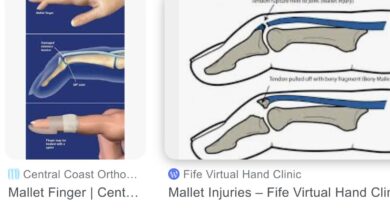SCAR TISSUE IN THE PALM OF YOUR HAND? You have DUPUYTREN’s CONTRACTURE!

Although my research classifies it as rare, I saw people with Dupuytren’s contracture in one or both hands quite often. Dupuytren’s Disease, a condition in which too much collagen is produced in the body, is the underlying problem. For unknown reasons, excess collagen forms in the palms of the hands and soles of the feet of sufferers. Also for unknown reasons, the body is unable to break down old collagen, and over a period of years, the collagen causes thickening of the skin and tender lumps and bumps in the palms. These lumps progressively enlarge and form cords that contract and cause your fingers to be pulled toward the palm of the hand. Patients are thus unable to straighten the affected fingers and cannot lie their palm(s) flat on a table.
Males are affected four times as often as women and the incidence increases over age 40. The cause of Dupuytren’s disease is unknown, but one’s risk is increased by lifestyle factors such as alcoholism and tobacco use and the presence of diseases such as diabetes, epilepsy, and liver and thyroid problems. Surprisingly, occupational trauma and hand injuries ARE NOT causes of Dupuytren’s.
To diagnose Dupuytren’s the doctor simply has to look at and feel the palms or your hands. The classic appearance of thickened lumps and tight cords in the palms plus the drawing up and forced arcing of several fingers are easily recognized. The skin may pucker or develop pits. A Dupuytren’s patient cannot lie the hand(s) flat and find it difficult to use the affected hand. Some things as simple as putting your hand in your pocket, washing your hands, wearing gloves, and shaking hands become difficult or impossible. The ring and fifth fingers are most frequently affected and as it worsens, the contracture forces them into flexion, and they cannot be straightened out.
Treatment is effective at relieving the contracture and breaking up the collagenous lumps and bands, but the underlying over-production of collagen is unaffected, and the condition re-occurs. So treatments often need to be repeated one or more times. Once the condition develops, the doctor is continually chasing it and trying to keep contracture formation to a minimum.
Seven Treatment options for Dupuytren’s contracture are recommended.
They are:
Observation — “Watchful waiting” Because of the high rate of recurrence after surgery, simply waiting and watching are advisable. This, combined with other treatments mentioned later, are a less-invasive way to treat the disorder.
Stretching and Cortisone Injections— stretching, splinting, and steroid injections were used often in the past, but since they seem likely to make the condition worse, they are now discouraged.
Collagenase Injections— Xiaflex is the trade name for collagenase, an enzyme that, when injected into the Dupuytren’s tissue, breaks down the contracture. It is expensive, is not covered by many insurers, and is not indicated for every Dupuytren’s patient.
Needle Aponeurotomy— using the point of a needle, the doctor makes small punctures in the skin and manipulates the needle to break up contracted tissue. Several such punctures can are usually needed for a successful result. It’s easy and safe, but expensive, and recurrence can be common.
Surgery—abnormal tissue is removed as thoroughly as possible through one or several skin incisions in the palm. Recurrence of the contracture is always a possibility.
Revision Surgery—since the underlying collagen problem remains, Dupuytren’s almost always comes back after other treatments and further treatment is needed. Medical researchers have not uncovered the cause of, or solution to, excess collagen production.
Salvage Treatments—when other treatments fail, a “salvage procedure” will make the situation as tolerable as possible. Joint fusions (permanently setting a joint in a certain position), external fixation (permanent stretching/splinting of a digit), and amputation are examples.
Bottom Line: Dupuytren’s Disease and contracture are not all doom and gloom. It progresses slowly and some people have success with surgery, Xiaflex (collagenase), and needle aponeurotomy. Altering one’s lifestyle (stopping alcohol, tobacco) and controlling diabetes, liver, and thyroid problems are good starting points. But since there is a genetic tendency for Dupuytren’s to develop, once you have it, you have it, and any treatment is only a temporary fix. One just SHOULD NOT let it get to the point of curling the fingers to where they are unusable. Do anything you can to avoid that outcome. People do adapt to the change, but I can only imagine how difficult it would be to use a hand with stiff, unusable fingers. Denial often gets in the way of logic and people minimize or ignore a disabling problem. Let’s hope some brilliant scientist finds a viable solution.
Dr. G’s Opinion: Most of my thoughts are in the text above. As I mentioned, I would not call Dupuytren’s a “rare” disorder. I saw it a lot. Just shake hands with somebody, and there it is. Until I researched it, I was unaware of the propensity with which it recurs. Nor was I aware contracture was a symptom of a bigger underlying problem. I do hope, for sufferers’ sake, effective treatment can be developed.
References: rarediseases.org/rare-diseases/Dupuytren’s-contracture
Mayoclinic.org/diseases-conditions/Dupuytren’s-contracture/symptoms-causes
VerywellHealth.com/treatment-options-for-Dupuytren-s-contracture




